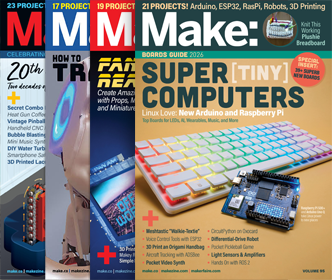DIY Camera Obscura
How to make the sunrise in your bedroom every morning. Many artists have used the Camera Obscura over the years, now make your own. – an optical experiment easy to do, but which, in spite of its simplicity, is able to give you a continuous marvel. What you have to do is simply mount a lens on the bedroom window. In this way, when you wake up in the morning, you will admire the outside scene projected on a wall of your bedroom. Link.





 “…construction of a very simple low-cost compound microscope. As shown in Figure 1, the microscope we describe is one that just about anyone can build and will produce a magnification of about 75 times. Microscopes may be thought of as very intricate and mysterious instruments but in reality, they are not as complicated as one may think. Building this simple instrument is not only a fun project, it will help you understand how microscopes work.” Thanks Rick!
“…construction of a very simple low-cost compound microscope. As shown in Figure 1, the microscope we describe is one that just about anyone can build and will produce a magnification of about 75 times. Microscopes may be thought of as very intricate and mysterious instruments but in reality, they are not as complicated as one may think. Building this simple instrument is not only a fun project, it will help you understand how microscopes work.” Thanks Rick!  “A Russian booster rocket successfully carried a satellite designed by students into a low Earth orbit yesterday for the European Space Agency under a programme intended to help to inspire and train future aerospace workers.” [
“A Russian booster rocket successfully carried a satellite designed by students into a low Earth orbit yesterday for the European Space Agency under a programme intended to help to inspire and train future aerospace workers.” [
 Great photos from Nikon’s “Small World – Gallery” – The Nikon International Small World Competition first began in 1974 as a means to recognize and applaud the efforts of those involved with photography through the light microscope. Since then, Small World has become a leading showcase for photomicrographers from the widest array of scientific disciplines… [
Great photos from Nikon’s “Small World – Gallery” – The Nikon International Small World Competition first began in 1974 as a means to recognize and applaud the efforts of those involved with photography through the light microscope. Since then, Small World has become a leading showcase for photomicrographers from the widest array of scientific disciplines… [
 About 5 years ago I wrote a few Macromedia Flash apps to be used in cars along with a “Flash and Telematics” article – besides my hacked up car the project didn’t get any far. But! The new Jaguars will now use Macromedia for their user interfaces! “…audio, navigation, climate control, telephone and vehicle settings can all be adjusted making it a critical design component in the driving experience, now fully enhanced with screen graphics reminiscent of a quality website.” No word, if you can put in your own . SWF files. [
About 5 years ago I wrote a few Macromedia Flash apps to be used in cars along with a “Flash and Telematics” article – besides my hacked up car the project didn’t get any far. But! The new Jaguars will now use Macromedia for their user interfaces! “…audio, navigation, climate control, telephone and vehicle settings can all be adjusted making it a critical design component in the driving experience, now fully enhanced with screen graphics reminiscent of a quality website.” No word, if you can put in your own . SWF files. [
 The same technology found in Bluetooth headset or wireless LAN could be used to build a cheap, powerful transmitter for communicating with deep space probes. It could even illuminate planets and asteroids for radar astronomy. The proposal is to build an array of millions of small antennas printed on circuit boards, just like the antennas in consumer electronics such as wireless headsets and GPS receivers. [
The same technology found in Bluetooth headset or wireless LAN could be used to build a cheap, powerful transmitter for communicating with deep space probes. It could even illuminate planets and asteroids for radar astronomy. The proposal is to build an array of millions of small antennas printed on circuit boards, just like the antennas in consumer electronics such as wireless headsets and GPS receivers. [
 The Design Trust for Public Space, in cooperation with Parsons The New School for Design, presents Designing the Taxi, an exhibition that builds on the momentum of the extraordinarily successful two-part workshop held last spring that investigated the future of the iconic New York City taxicab as it approaches its centennial in 2007. The exhibition of designs presenting future ideas for the taxi will be on view from November 3, 2005, through January 15, 2006, at the Parsons gallery at 2 West 13th Street. An opening reception will take place on Wednesday, November 2, 6-9 p.m., which will also celebrate the publication of the Designing the Taxi findings.
The Design Trust for Public Space, in cooperation with Parsons The New School for Design, presents Designing the Taxi, an exhibition that builds on the momentum of the extraordinarily successful two-part workshop held last spring that investigated the future of the iconic New York City taxicab as it approaches its centennial in 2007. The exhibition of designs presenting future ideas for the taxi will be on view from November 3, 2005, through January 15, 2006, at the Parsons gallery at 2 West 13th Street. An opening reception will take place on Wednesday, November 2, 6-9 p.m., which will also celebrate the publication of the Designing the Taxi findings. 